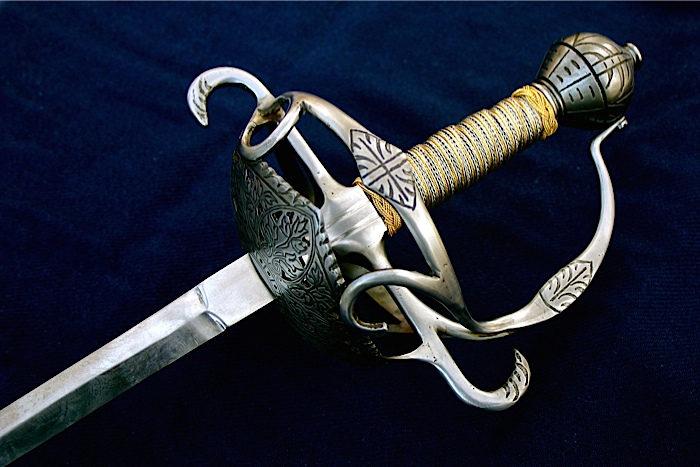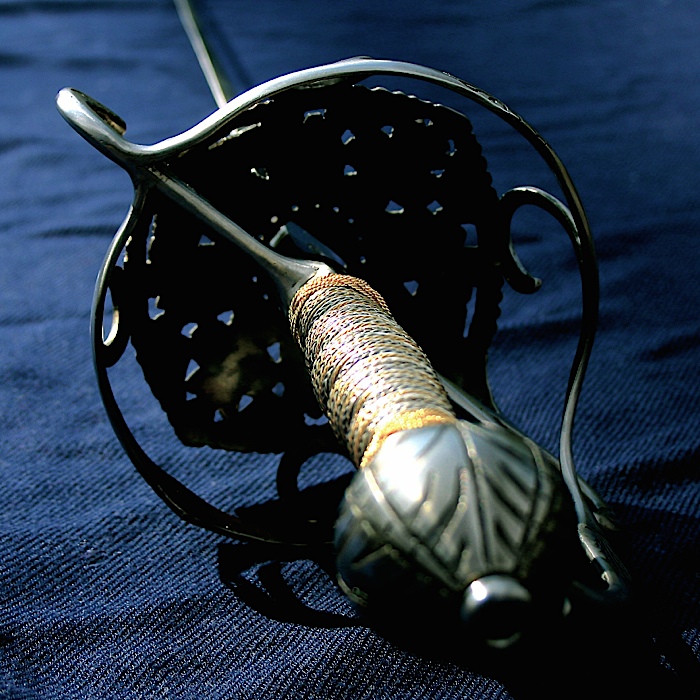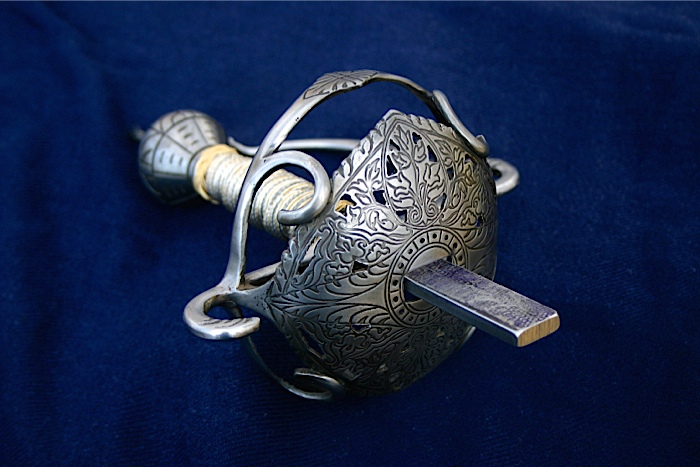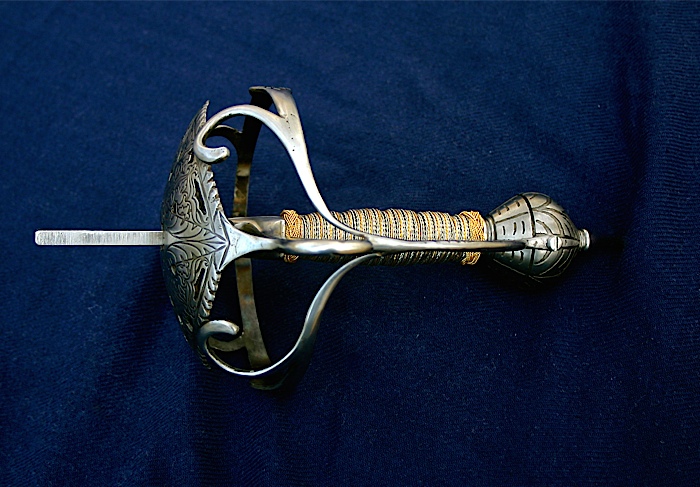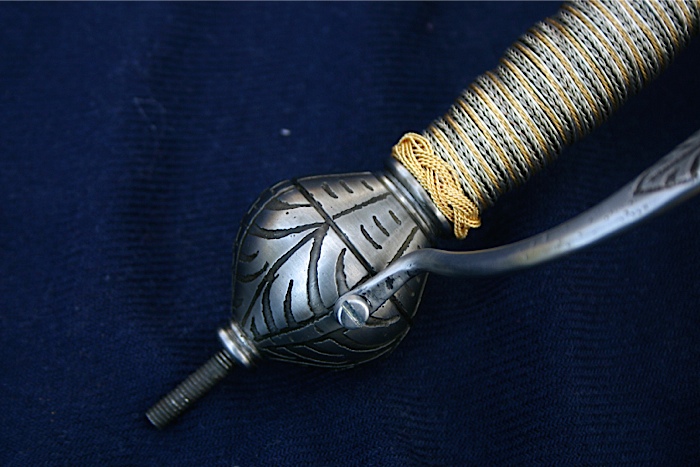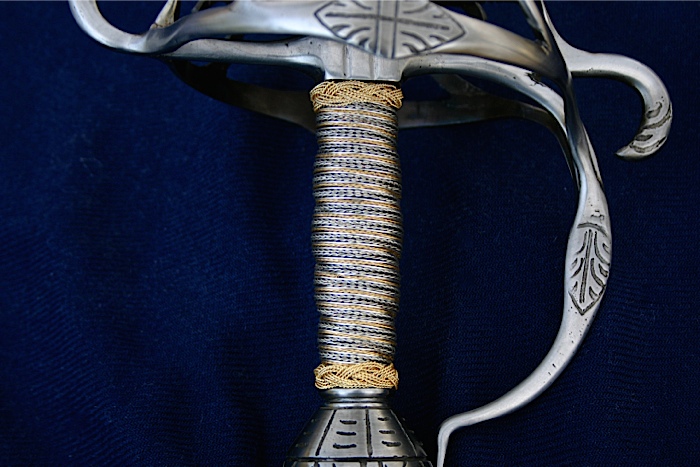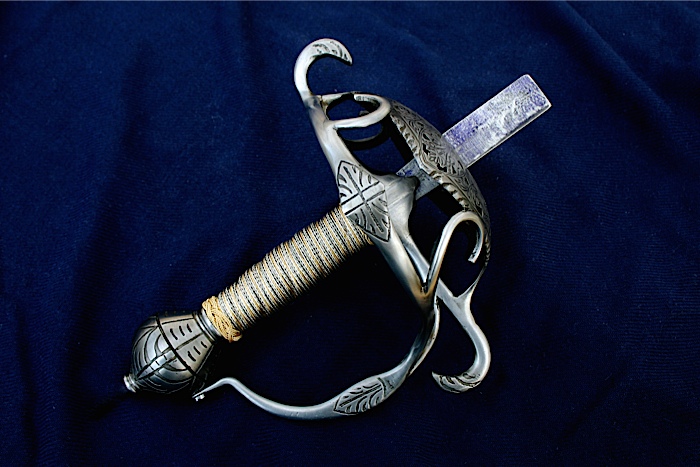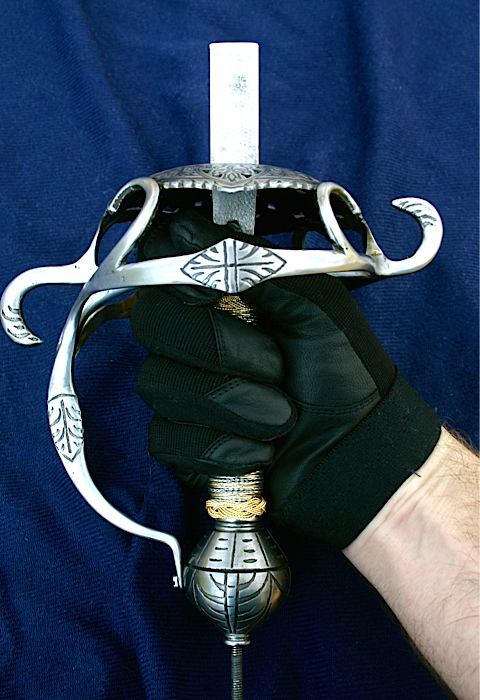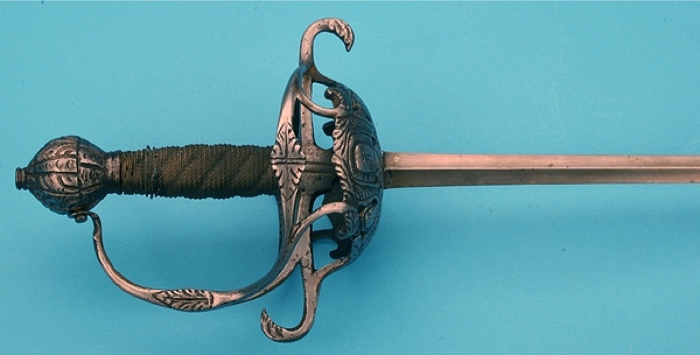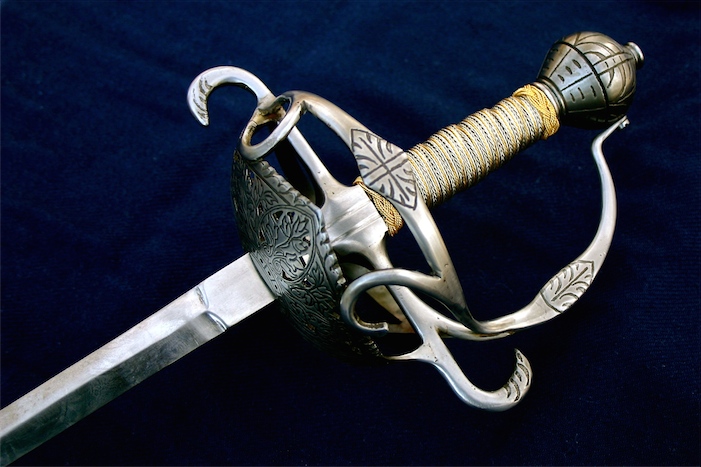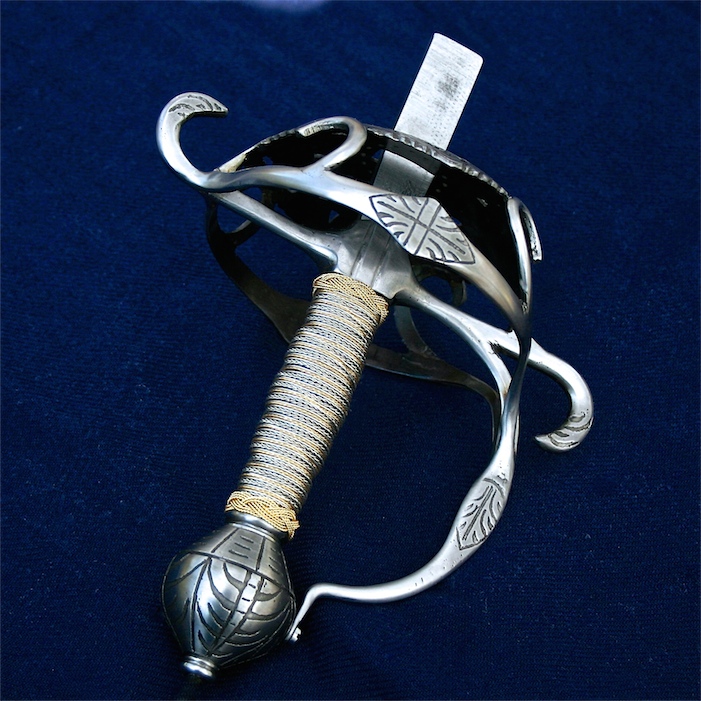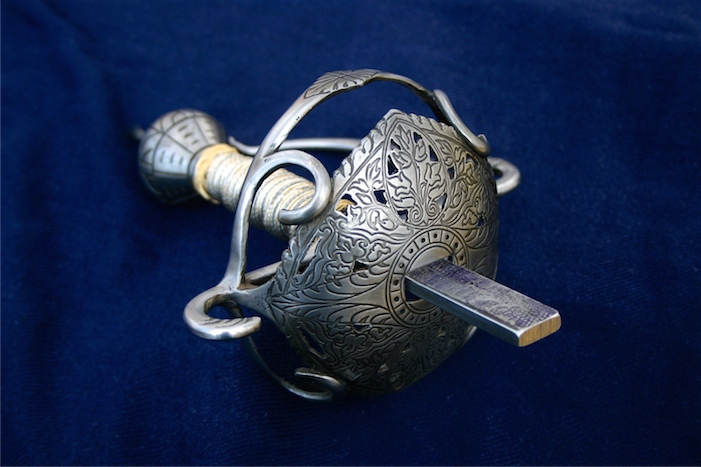My decorative work is etched rather than engraved like the original, but I think it works fairly well to capture the effect of the original. The pommel is keyed to the tang and ready to be hot-peened in place. A sword like this can't really have a screw-on pommel anyhow, since the knucklebow screws to the pommel (so keeping things tight would be problematic). The grip is carved polycarbonate plastic, to add strength to the narrow parts of the carving and also to minimize weather-based changes in the grip which could affect tightness later on in the weapon’s life. I went with 4 passes on the turk’s head knots, which makes them fatter and more visually substantial.
I tried it on a few different blades I had in the shop…none fit quite right without modifying the tangs, but my guess is this sword will balance quite close to the hilt on the average size blade. The pommel is good sized, and there is a lot of mass in the hilt (1.65 lbs total). Interestingly the grip is slightly longer than most rapiers i’ve looked carefully at. I scaled the images of the original, and while its likely there is lens distortion in the full length photos, the grip appears to be 3.5” long. Most rapier grips are only 3” long, and that extra half inch isn’t immaterial. However, the portion of the hilt above the arms (the shell part) is about a half inch shorter than most rapiers with pas d’ane, so the total length of the hilt is “normal” but the pivot point of the quillon block is further from the pommel. Anyhow, I followed those proportions carefully in my own version, so I look forward to hearing about how it handles once it is all mounted up.
Here is the auction of the original this is based on if anyone is curious: http://antiqueswords.com/product-1992-A-Good-...ad-image-3
